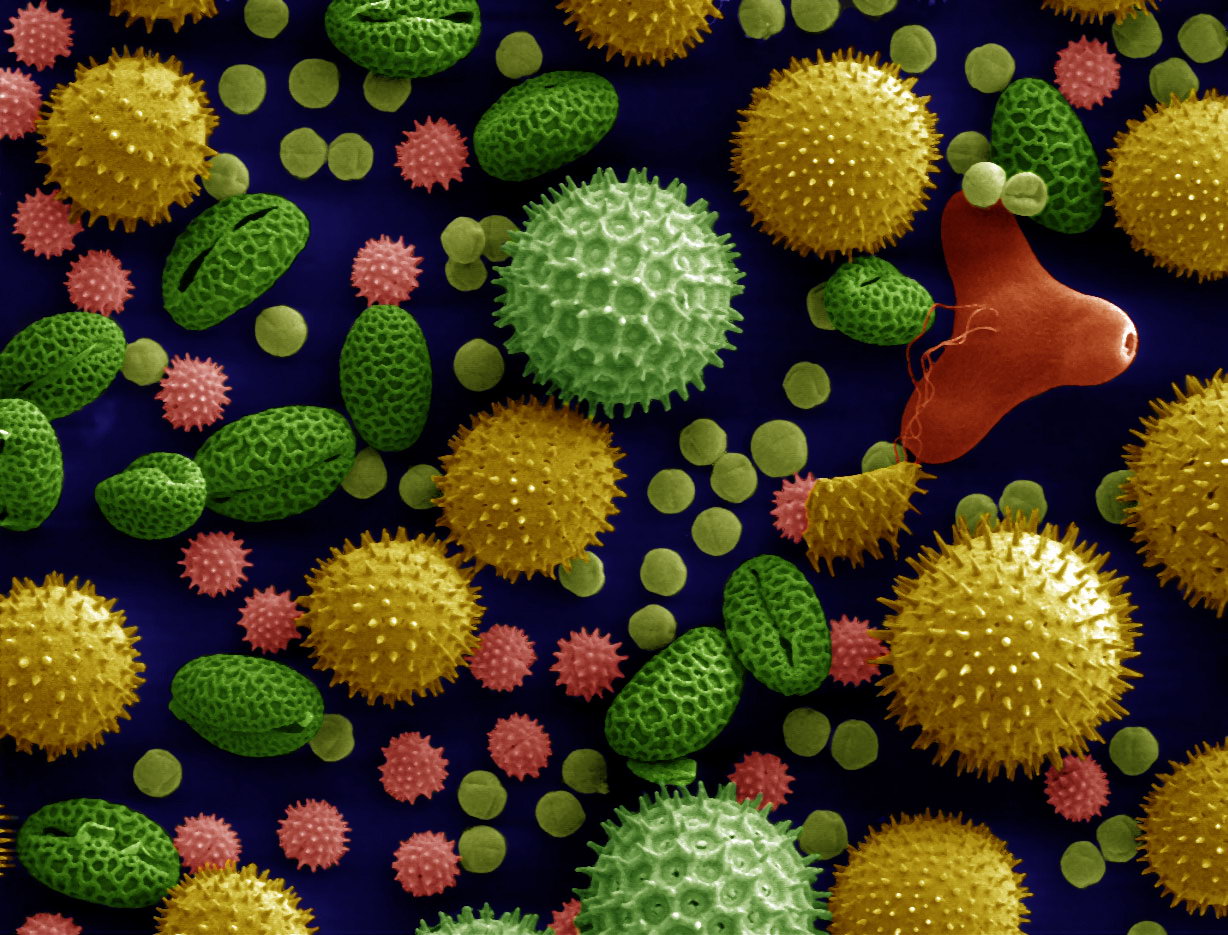|
Plasmonic Lens
In nano-optics, a plasmonic lens generally refers to a lens for surface plasmon polaritons (SPPs), i.e. a device that redirects SPPs to converge towards a single focal point. Because SPPs can have very small wavelength, they can converge into a very small and very intense spot, much smaller than the free space wavelength and the diffraction limit. A simple example of a plasmonic lens is a series of concentric rings on a metal film. Any light that hits the film from free space at a 90 degree angle, known as the normal, will get coupled into a SPP (this part works like a diffraction grating coupler), and that SPP will be heading towards the center of the circles, which is the focal point. See alsPress release: Denser computer chips possible with plasmonic lenses UC Berkeley News. 2008-10-22 Another example is a tapered "dimple". In 2007, a novel, or technologically new, plasmonic lenses and waveguide by modulating light a mesoscale dielectric structure on a metallic film with ... [...More Info...] [...Related Items...] OR: [Wikipedia] [Google] [Baidu] |
Nano-optics
Nanophotonics or nano-optics is the study of the behavior of light on the nanometer scale, and of the interaction of nanometer-scale objects with light. It is a branch of optics, optical engineering, electrical engineering, and nanotechnology. It often involves dielectric structures such as nanoantennas, or metallic components, which can transport and focus light via surface plasmon polaritons. The term "nano-optics", just like the term "optics", usually refers to situations involving ultraviolet, visible, and near-infrared light (free-space wavelengths from 300 to 1200 nanometers). Background Normal optical components, like lenses and microscopes, generally cannot normally focus light to nanometer (deep subwavelength) scales, because of the diffraction limit (Rayleigh criterion). Nevertheless, it is possible to squeeze light into a nanometer scale using other techniques like, for example, surface plasmons, localized surface plasmons around nanoscale metal objects, and th ... [...More Info...] [...Related Items...] OR: [Wikipedia] [Google] [Baidu] |
Waveguides
A waveguide is a structure that guides waves, such as electromagnetic waves or sound, with minimal loss of energy by restricting the transmission of energy to one direction. Without the physical constraint of a waveguide, wave intensities decrease according to the inverse square law as they expand into three-dimensional space. There are different types of waveguides for different types of waves. The original and most common meaningInstitute of Electrical and Electronics Engineers, “The IEEE standard dictionary of electrical and electronics terms”; 6th ed. New York, N.Y., Institute of Electrical and Electronics Engineers, c1997. IEEE Std 100-1996. d. Standards Coordinating Committee 10, Terms and Definitions; Jane Radatz, (chair)/ref> is a hollow conductive metal pipe used to carry high frequency radio waves, particularly microwaves. Dielectric waveguides are used at higher radio frequencies, and transparent dielectric waveguides and optical fibers serve as waveguides f ... [...More Info...] [...Related Items...] OR: [Wikipedia] [Google] [Baidu] |
Biotechnology
Biotechnology is the integration of natural sciences and engineering sciences in order to achieve the application of organisms, cells, parts thereof and molecular analogues for products and services. The term ''biotechnology'' was first used by Károly Ereky in 1919, meaning the production of products from raw materials with the aid of living organisms. Definition The concept of biotechnology encompasses a wide range of procedures for modifying living organisms according to human purposes, going back to domestication of animals, cultivation of the plants, and "improvements" to these through breeding programs that employ artificial selection and hybridization. Modern usage also includes genetic engineering as well as cell and tissue culture technologies. The American Chemical Society defines biotechnology as the application of biological organisms, systems, or processes by various industries to learning about the science of life and the improvement of the value of materia ... [...More Info...] [...Related Items...] OR: [Wikipedia] [Google] [Baidu] |
Plasmonics
Plasmonics or nanoplasmonics refers to the generation, detection, and manipulation of signals at optical frequencies along metal-dielectric interfaces in the nanometer scale. Inspired by photonics, plasmonics follows the trend of miniaturizing optical devices (see also nanophotonics), and finds applications in sensing, microscopy, optical communications, and bio-photonics. Principles Plasmonics typically utilizes so-called surface plasmon polaritons (SPPs), that are coherent electron oscillations travelling together with an electromagnetic wave along the interface between a dielectric (e.g. glass, air) and a metal (e.g. silver, gold). The SPP modes are strongly confined to their supporting interface, giving rise to strong light-matter interactions. In particular, the electron gas in the metal oscillates with the electro-magnetic wave. Because the moving electrons are scattered, ohmic losses in plasmonic signals are generally large, which limits the signal transfer distances to ... [...More Info...] [...Related Items...] OR: [Wikipedia] [Google] [Baidu] |
Solar Cells
A solar cell, or photovoltaic cell, is an electronic device that converts the energy of light directly into electricity by the photovoltaic effect, which is a physical and chemical phenomenon.Solar Cells chemistryexplained.com It is a form of photoelectric cell, defined as a device whose electrical characteristics, such as current, , or , vary when exposed to light. Individual solar cell devices are often the elec ... [...More Info...] [...Related Items...] OR: [Wikipedia] [Google] [Baidu] |
Biophotonics
The term biophotonics denotes a combination of biology and photonics, with photonics being the science and technology of generation, manipulation, and detection of photons, quantum units of light. Photonics is related to electronics and photons. Photons play a central role in information technologies, such as fiber optics, the way electrons do in electronics. Biophotonics can also be described as the "development and application of optical techniques, particularly imaging, to the study of biological molecules, cells and tissue". One of the main benefits of using the optical techniques which make up biophotonics is that they preserve the integrity of the biological cells being examined. Biophotonics has therefore become the established general term for all techniques that deal with the interaction between biological items and photons. This refers to emission, detection, absorption, reflection, modification, and creation of radiation from biomolecular, cells, tissues, organisms, ... [...More Info...] [...Related Items...] OR: [Wikipedia] [Google] [Baidu] |
Microscopy
Microscopy is the technical field of using microscopes to view objects and areas of objects that cannot be seen with the naked eye (objects that are not within the resolution range of the normal eye). There are three well-known branches of microscopy: optical, electron, and scanning probe microscopy, along with the emerging field of X-ray microscopy. Optical microscopy and electron microscopy involve the diffraction, reflection, or refraction of electromagnetic radiation/electron beams interacting with the specimen, and the collection of the scattered radiation or another signal in order to create an image. This process may be carried out by wide-field irradiation of the sample (for example standard light microscopy and transmission electron microscopy) or by scanning a fine beam over the sample (for example confocal laser scanning microscopy and scanning electron microscopy). Scanning probe microscopy involves the interaction of a scanning probe with the surface of the ... [...More Info...] [...Related Items...] OR: [Wikipedia] [Google] [Baidu] |
Heat-assisted Magnetic Recording
Heat-assisted magnetic recording (HAMR) (pronounced "''hammer")'' is a magnetic storage technology for greatly increasing the amount of data that can be stored on a magnetic device such as a hard disk drive by temporarily heating the disk material during writing, which makes it much more receptive to magnetic effects and allows writing to much smaller regions (and much higher levels of data on a disk). The technology was initially seen as extremely difficult to achieve, with doubts expressed about its feasibility in 2013. The regions being written must be heated in a tiny area - small enough that diffraction prevents the use of normal laser focused heating - and requires a heating, writing and cooling cycle of less than 1 nanosecond, while also controlling the effects of repeated spot-heating on the drive platters, the drive-to-head contact, and the adjacent magnetic data which must not be affected. These challenges required the development of nano-scale surface plasmons (surfa ... [...More Info...] [...Related Items...] OR: [Wikipedia] [Google] [Baidu] |
Photolithography
In integrated circuit manufacturing, photolithography or optical lithography is a general term used for techniques that use light to produce minutely patterned thin films of suitable materials over a substrate, such as a silicon wafer (electronics), wafer, to protect selected areas of it during subsequent etching, Chemical vapor deposition, deposition, or Ion implantation, implantation operations. Typically, ultraviolet light is used to transfer a geometry, geometric design from an photomask, optical mask to a photosensitivity, light-sensitive chemical (photoresist) coated on the substrate. The photoresist either breaks down or hardens where it is exposed to light. The patterned film is then created by removing the softer parts of the coating with appropriate solvents. Conventional photoresists typically consists of three components: resin, sensitizer, and solvent. Photolithography processes can be classified according to the type of light used, such as ultraviolet, deep ultrav ... [...More Info...] [...Related Items...] OR: [Wikipedia] [Google] [Baidu] |
Electromagnetic Radiation
In physics, electromagnetic radiation (EMR) consists of waves of the electromagnetic (EM) field, which propagate through space and carry momentum and electromagnetic radiant energy. It includes radio waves, microwaves, infrared, (visible) light, ultraviolet, X-rays, and gamma rays. All of these waves form part of the electromagnetic spectrum. Classically, electromagnetic radiation consists of electromagnetic waves, which are synchronized oscillations of electric and magnetic fields. Depending on the frequency of oscillation, different wavelengths of electromagnetic spectrum are produced. In a vacuum, electromagnetic waves travel at the speed of light, commonly denoted ''c''. In homogeneous, isotropic media, the oscillations of the two fields are perpendicular to each other and perpendicular to the direction of energy and wave propagation, forming a transverse wave. The position of an electromagnetic wave within the electromagnetic spectrum can be characterized ... [...More Info...] [...Related Items...] OR: [Wikipedia] [Google] [Baidu] |
Superlens
A superlens, or super lens, is a lens which uses metamaterials to go beyond the diffraction limit. For example, in 1995, Guerra combined a transparent grating having 50nm lines and spaces (the "metamaterial") with a conventional microscope immersion objective. The resulting "superlens" resolved a silicon sample also having 50nm lines and spaces, far beyond the classical diffraction limit imposed by the illumination having 650nm wavelength in air. The diffraction limit is a feature of conventional lenses and microscopes that limits the fineness of their resolution depending on the illumination wavelength and the numerical aperture NA of the objective lens. Many lens designs have been proposed that go beyond the diffraction limit in some way, but constraints and obstacles face each of them. History In 1873 Ernst Abbe reported that conventional lenses are incapable of capturing some fine details of any given image. The super lens is intended to capture such details. The limitation o ... [...More Info...] [...Related Items...] OR: [Wikipedia] [Google] [Baidu] |
Subwavelength
In physics, the wavelength is the spatial period of a periodic wave—the distance over which the wave's shape repeats. It is the distance between consecutive corresponding points of the same phase on the wave, such as two adjacent crests, troughs, or zero crossings, and is a characteristic of both traveling waves and standing waves, as well as other spatial wave patterns. The inverse of the wavelength is called the spatial frequency. Wavelength is commonly designated by the Greek letter ''lambda'' (λ). The term ''wavelength'' is also sometimes applied to modulated waves, and to the sinusoidal envelopes of modulated waves or waves formed by interference of several sinusoids. Assuming a sinusoidal wave moving at a fixed wave speed, wavelength is inversely proportional to frequency of the wave: waves with higher frequencies have shorter wavelengths, and lower frequencies have longer wavelengths. Wavelength depends on the medium (for example, vacuum, air, or water) that a w ... [...More Info...] [...Related Items...] OR: [Wikipedia] [Google] [Baidu] |








